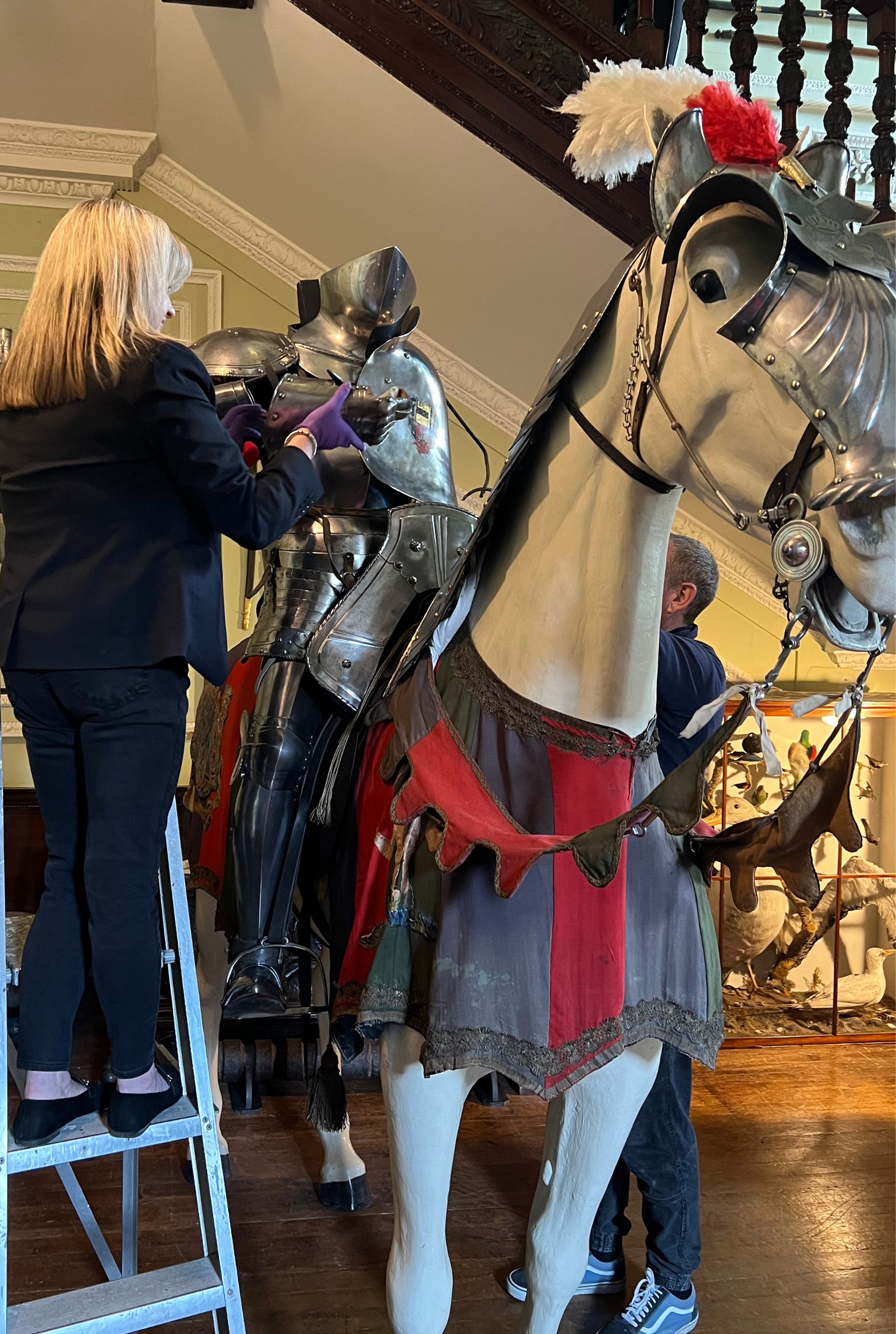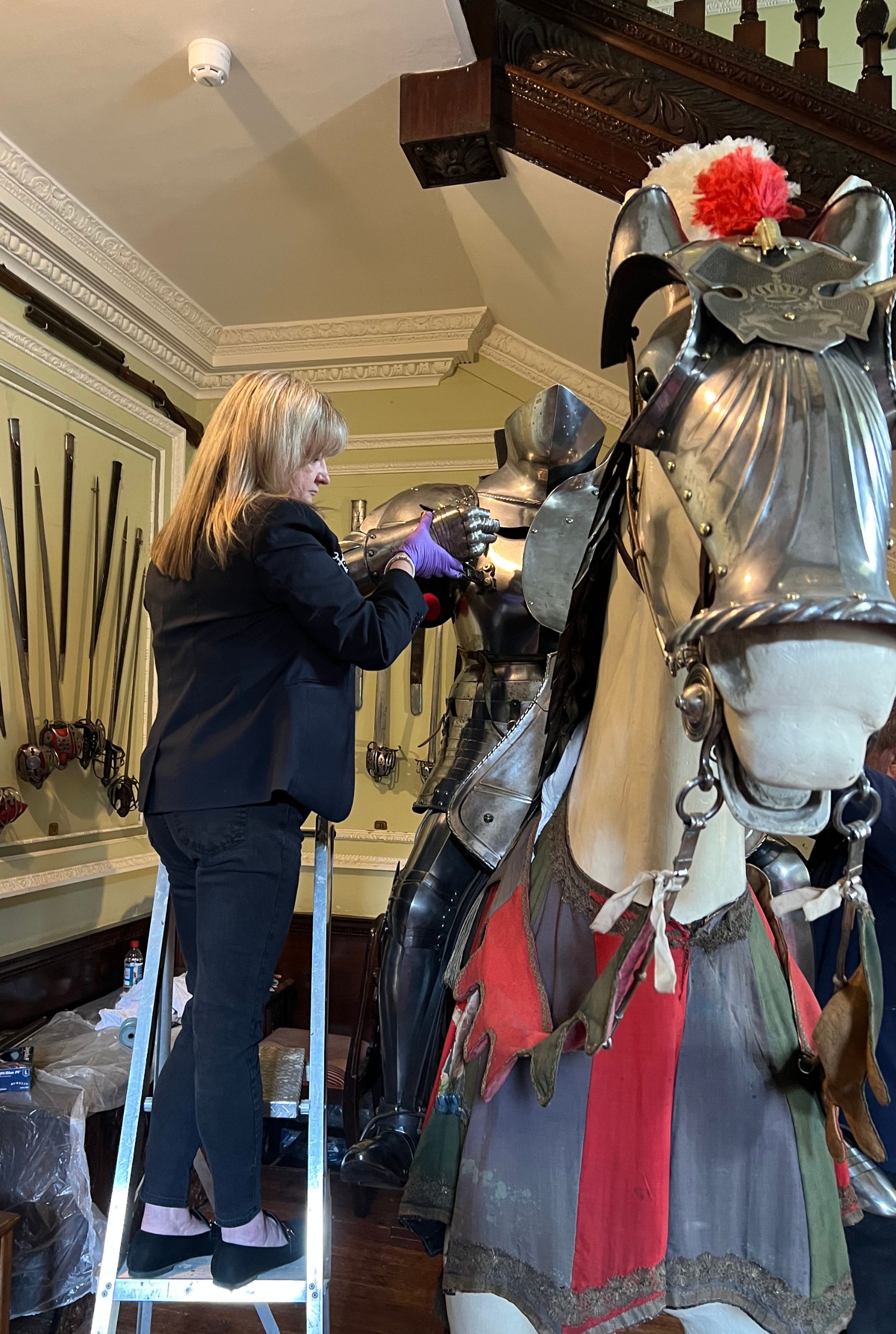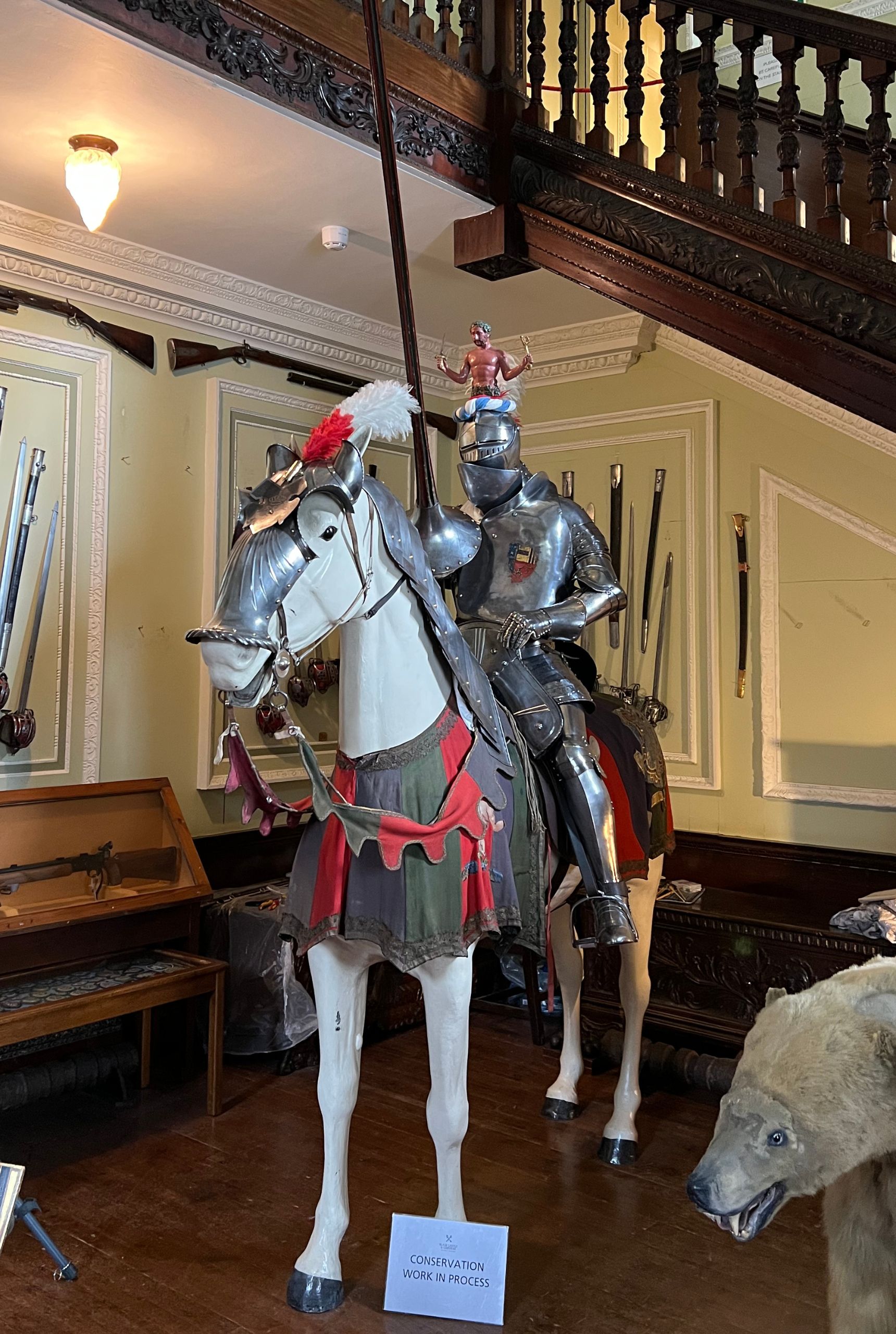Conservation of Lord Glenlyon’s Armour
The story behind the armour of Lord Glenlyon
France and Germany, 16th-century style, assembled 19th century
In 1839, Lord Glenlyon took part in the Eglinton Tournament, a dramatic recreation of a medieval joust staged in Ayrshire, Scotland. Reflecting the Victorian era’s fascination with the chivalric past, participants wore historically inspired armour and took part in events such as jousting and mock combat.
The suit of armour displayed at Blair Castle was worn by Lord Glenlyon during the tournament. It is an exceptional example of 19th-century revivalist armour, made up of pieces by French and German armourers, some original and some reproduction, carefully combined to resemble the late 16th-century style.
Although it was designed for ceremonial combat, this armour was fully functional. During the melee at the tournament, Lord Glenlyon’s gauntlet was struck and partially shattered across the knuckles—fortunately, the injury was minor.
The armour in detail
The close helmet, with a two-part visor and bevor, features a raised comb and plume holder, and is mounted with the Atholl crest in carved wood. Its borders are engraved with decorative foliage, demonstrating the high level of craftsmanship and attention to detail.
The breastplate, shaped in the distinctive peascod style, includes a lance rest and is reinforced with a mentonière and manteau, bolted together and bearing a painted heraldic shield. A gorget protects the neck, while a three-lame skirt suspends tassets made of seven lames on each side, offering protection to the upper legs.
Shoulder defences (pauldrons) consist of eight overlapping plates, to which the articulated rerebraces, elbow cops, and vambraces are attached.
The gauntlets are particularly complex, with hinged cuffs, seven lames across the hand, and nine articulating plates on each finger—offering both flexibility and protection.
The leg armour includes cuisses with knee defences made of five lames, flared tendon guards, greaves, and articulated sabatons to protect the feet. The suit was worn alongside a fully armoured horse, complete with saddle trappings and a tilting lance, underscoring the dramatic visual impact Glenlyon intended to make.
Conservation of the armour
This armour is composed of numerous interlocking and articulated components, making it exceptionally challenging to conserve. Our specialist conservation team spent eight weeks carefully cleaning the entire suit.
Each joint, hinge, and engraved surface had to be treated delicately and individually, ensuring the original materials were preserved without stress or damage. Handling and assembling the suit requires specialist knowledge and precision due to its weight, complexity, and fragility.



